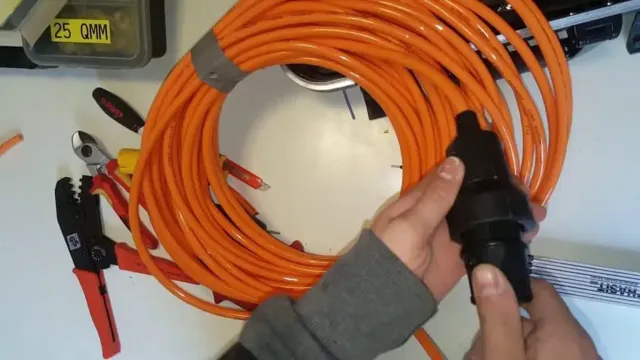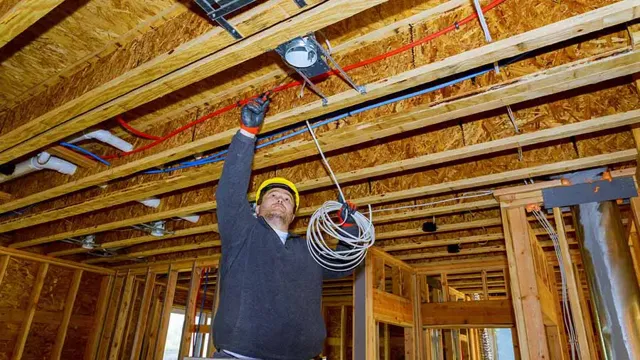Planning to power up your high voltage appliances or equipment? Proper electrical wire gauge is crucial in ensuring safety and efficiency in your household. With 220 volts, it’s essential to get the right wire size to avoid overheating, voltage drop, and even fire hazards. But what gauge wire do you need for 220? Whether you’re into DIY projects or an electrician, stay tuned in this blog to know the right wire size that suits your needs.
We’ll also highlight the importance of wire gauge and tips on choosing the best wire for 220 volts.
Understanding Electric Wire Gauges
When it comes to powering a 220-volt appliance, it’s essential to know what gauge wire you need. The size of the wire will determine how much current it can handle, and if you go with a wire that’s too small, it may overheat and create a safety hazard. Generally, a 12-gauge wire is the minimum size recommended for a 20-amp circuit, while a 10-gauge wire is better for a 30-amp circuit.
However, it’s crucial to consider the length of the wire and the distance between the appliance and the power source, as this can affect the wire’s resistance and the overall voltage drop. So, if you’re unsure about what gauge wire you need for your 220-volt appliance, it’s always best to consult an electrician to ensure your wiring is safe and up to code.
What is Voltage Drop?
Voltage drop, Electric wire gauges Voltage drop is a common issue that occurs when there is a drop in voltage as a result of the resistance in a wire. This can happen when electricity is transmitted over a long distance, or when wires are too thin to handle the amount of current being carried. Understanding electric wire gauges can help you prevent voltage drop by ensuring that you choose the right size wire for the job.
The gauge of the wire determines how much current it can handle, and therefore how much voltage drop is likely to occur. A thicker wire has less resistance, so it can handle more current without experiencing as much voltage drop as a thinner wire. When you’re choosing wire gauge, it’s important to consider factors like the length of the wire, the amount of current it will be carrying, and the environment it will be exposed to.
By making the right choice, you can prevent voltage drop and ensure that your electrical system operates smoothly and efficiently.

Different Wires for Different Amps
If you’re into electronics or DIY household repairs, then you’ve probably heard about the importance of using the right wire gauge for different amps. Electric wires come in various sizes or gauges, each suited for a specific current load. Most people are familiar with the basic wire gauges like 14 AWG or 16 AWG, but choosing the right size can be tricky, especially if you’re not well-versed in electrical engineering.
In essence, the wire gauge refers to the diameter of the wire — the thicker the wire, the lower the gauge number, and the higher the amp capacity. For instance, a 12-gauge wire can handle much more current than a 16-gauge wire. Using the wrong wire gauge can lead to several issues, such as electrical fires, blown circuits, or damaged appliances.
So, before you embark on your next DIY project, make sure you understand which wire gauge is appropriate for your specific application.
Determining Wire Gauge for 220
When it comes to wiring a 220 circuit, it’s crucial to use the correct wire gauge to ensure safety and efficiency. So, what gauge wire do you need for 220? The answer depends on the amperage of the circuit. For a 30-amp circuit, 10-gauge wire should suffice, while a 50-amp circuit will require 6-gauge wire.
It’s essential to always check the manufacturer’s recommended wire gauge, which can be found in the owner’s manual or on the unit itself. Using the wrong gauge wire can lead to overheating, tripped breakers, or even electrical fires. It’s always better to be safe than sorry when it comes to electrical work, so double-check your wire gauge before installation.
Calculating the Amps
When determining wire gauge for 220, it’s essential to calculate the amps to ensure the wire can handle the load. To do this, you’ll first need to identify the wattage rating of your device. Simply divide the wattage by the voltage (220) to get the amperage.
For example, if your device is rated for 4400 watts, divide that by 220 to get 20 amps. Once you’ve determined the amperage, you can use a wire gauge chart to select the appropriate wire size. Keep in mind that the longer the wire run, the more voltage drop you will experience, so it’s crucial to choose a wire size that can handle the amperage while also minimizing voltage drop.
Utilizing the correct wire gauge will ensure that the circuit is safe and efficient, leaving you worry-free.
Choosing the Right Wire Gauge
When it comes to determining the wire gauge for a 220-volt appliance, there are a few important factors to consider. The first is the amperage of the appliance, as this will determine the minimum wire size needed. Typically, a 220-volt appliance will require a wire size of at least 10 AWG, which can handle up to 30 amps of current.
However, if the appliance requires more than 30 amps, a larger wire gauge will be needed. It’s also important to consider the length of the wire run, as longer runs will require thicker wire to prevent voltage drop and ensure proper performance. Overall, choosing the right wire gauge is crucial for ensuring safe and efficient operation of your 220-volt appliance.
Table of Recommended Wire Gauges
When it comes to determining the wire gauge for 220, there are a few factors to consider. Wire gauge refers to the thickness of the wire and is measured in American Wire Gauge (AWG). The thicker the wire, the smaller the gauge number.
For a 220 volt circuit, a gauge of at least 10 AWG is recommended to handle the current safely and efficiently. To help determine the appropriate wire gauge for your specific situation, it’s important to consider the distance the wire will need to travel, the amount of current required, and the type of wire being used. The wire gauge can also be affected by factors such as temperature and the load being applied to the circuit.
In general, thicker wire gauges are used for higher current loads and longer distances, while thinner gauges can be used for lower loads and shorter distances. As a rule of thumb, a 220 volt circuit that requires up to 20 amps of current should use 10 gauge wire, while a circuit that requires up to 30 amps should use 8 gauge wire. Overall, it’s important to consult with a qualified electrician or use a wire gauge calculator to ensure that the appropriate wire gauge is selected for your specific application.
By selecting the correct wire gauge, you can ensure a safer and more efficient electrical system.
Conclusion
In conclusion, determining what gauge wire you need for 220 is like figuring out the perfect recipe for a delicious meal. It requires careful measurement and attention to detail. A wire that is too thin can leave you with a burnt dish, while a wire that is too thick can be like using a sledgehammer to crack a nut.
So, to avoid any electrical mishaps, make sure to consult the recipe book, or in this case, an electrician, to ensure you have the perfect gauge wire for your 220 needs.”
FAQs
What is the voltage rating for a 220 circuit?
The voltage rating for a 220 circuit is 220 volts.
What is the maximum amperage for 220v power?
The maximum amperage for 220v power depends on the wire gauge used. For example, 12-gauge wire can handle up to 20 amps, while 10-gauge wire can handle up to 30 amps.
Can I use a smaller gauge wire for a 220 circuit?
It is not recommended to use a smaller gauge wire for a 220 circuit. Using an undersized wire can lead to overheating and potential fire hazards.
How do I determine the needed wire gauge for my 220 circuit?
The needed wire gauge for a 220 circuit depends on the amperage load and distance of the circuit. It is recommended to consult a professional electrician for an accurate determination.
Can I use a 110v wire for a 220 circuit?
No, a 110v wire cannot be used for a 220 circuit. 220v circuits require wires with higher amperage and voltage ratings.
What is the difference between 220v and 240v circuits?
In terms of electrical power, 220v and 240v circuits are essentially the same. They both provide high voltage power for larger appliances.
Is it safe to work with electric wires for a 220 circuit?
Working with electric wires for a 220 circuit can be dangerous and should only be done by a qualified electrician. Proper safety measures, such as turning off all power to the circuit, must be taken to avoid electrical accidents.






